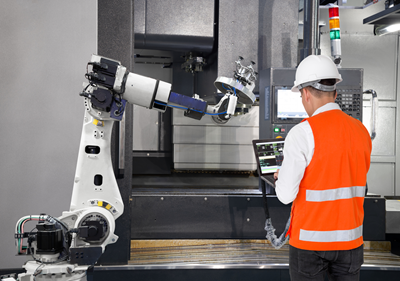In recent years, robots have become an integral part of various industries, including manufacturing, healthcare, and logistics. These machines have revolutionized the way tasks are performed, increasing efficiency, productivity, and accuracy. However, like any other machine, robots require regular maintenance to ensure they continue to function optimally. In this article, we will discuss the importance of robot maintenance practices, common maintenance tasks, and provide tips for implementing an effective maintenance schedule.

Why Robot Maintenance is Crucial
Robot maintenance is essential for several reasons:
- Prevents Downtime: Regular maintenance helps identify potential issues before they become major problems, reducing the risk of unexpected downtime. When a robot is out of commission, production comes to a halt, resulting in lost revenue and decreased productivity.
- Extends Robot Lifespan: Proper maintenance extends the lifespan of a robot, reducing the need for premature replacements. This, in turn, saves companies money on replacement costs and minimizes the environmental impact of waste.
- Ensures Accuracy and Quality: Well-maintained robots produce high-quality products with greater accuracy. Neglecting maintenance can lead to decreased product quality, which can damage a company’s reputation and result in financial losses.
- Enhances Safety: Regular maintenance helps identify potential safety hazards, reducing the risk of accidents and injuries. A well-maintained robot is less likely to malfunction, which can prevent harm to humans and other equipment.
Common Robot Maintenance Tasks
The following are some common maintenance tasks that should be performed regularly:
- Lubrication: Robots have moving parts that require lubrication to function smoothly. Regular lubrication helps reduce wear and tear, preventing premature failure.
- Cleaning: Robots can accumulate dust, dirt, and other debris, which can interfere with their operation. Regular cleaning helps prevent damage and ensures optimal performance.
- Software Updates: Robots often rely on software to function. Regular software updates ensure that the robot has the latest features and security patches, reducing the risk of errors and vulnerabilities.
- Battery Maintenance: Many robots rely on batteries for power. Regular battery maintenance, such as charging and discharging, helps extend battery life and prevent premature failure.
- Sensor Calibration: Robots rely on sensors to navigate and interact with their environment. Regular sensor calibration ensures that the robot can accurately detect and respond to its surroundings.
Implementing an Effective Maintenance Schedule
To ensure that robot maintenance tasks are performed regularly, companies should implement a maintenance schedule. The following are some tips for creating an effective schedule:
- Create a Maintenance Calendar: Create a calendar that outlines the maintenance tasks that need to be performed and the frequency of each task.
- Assign Maintenance Responsibilities: Assign maintenance tasks to specific individuals or teams, ensuring that everyone knows their responsibilities.
- Use CMMS Software: Computerized Maintenance Management System (CMMS) software can help track maintenance tasks, schedule maintenance, and monitor robot performance.
- Perform Regular Inspections: Regular inspections can help identify potential issues before they become major problems.
- Train Maintenance Personnel: Ensure that maintenance personnel are trained to perform maintenance tasks correctly and safely.
FAQ
- Q: How often should robots be maintained?
A: The frequency of maintenance depends on the type of robot, its usage, and the manufacturer’s recommendations. Generally, robots should be maintained every 1-3 months. - Q: What are the most common maintenance tasks?
A: The most common maintenance tasks include lubrication, cleaning, software updates, battery maintenance, and sensor calibration. - Q: Can robot maintenance be performed in-house?
A: Yes, many robot maintenance tasks can be performed in-house. However, some tasks may require specialized training or equipment, and it’s recommended to consult the manufacturer’s recommendations. - Q: How can I extend the lifespan of my robot?
A: Proper maintenance, regular cleaning, and avoiding overuse can help extend the lifespan of a robot. - Q: What are the consequences of neglecting robot maintenance?
A: Neglecting robot maintenance can lead to decreased product quality, increased downtime, and premature failure of the robot.
Conclusion
Robot maintenance is essential for ensuring the efficiency, productivity, and longevity of robots. Regular maintenance tasks, such as lubrication, cleaning, software updates, battery maintenance, and sensor calibration, can help prevent downtime, extend robot lifespan, and ensure accuracy and quality. By implementing an effective maintenance schedule, companies can minimize the risk of accidents, reduce maintenance costs, and maximize the benefits of using robots. Remember, a well-maintained robot is a productive and efficient robot. By following the tips and guidelines outlined in this article, companies can ensure that their robots continue to operate at optimal levels, driving business success and growth.
Closure
Thus, we hope this article has provided valuable insights into The Importance of Robot Maintenance Practices: Ensuring Efficiency and Longevity. We thank you for taking the time to read this article. See you in our next article!
